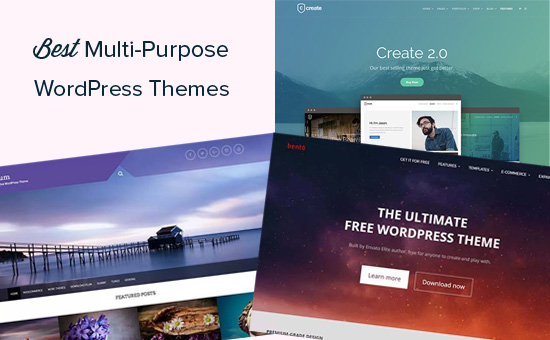WordPress templates are one of its main advantages, as well as one of the biggest benefits of this platform. The free WordPress repository alone has over two thousand templates, not to mention the thousands of others that can be obtained from third-party developers. For example, we can name the service https://www.templatemonster.com/, where you can find many interesting templates for websites. With such a wide choice to decide sometimes can not be an easy thing to do. But with this guide, you can probably narrow your choices.
Plan ahead
Not every template will fit any site. Before you start hunting for templates, you need to understand how you want to see your site. Many users make a mistake, first looking for a template, and then customizing your site, while it should be the other way around. First, deal with what you will have for the site: whether it will be a portfolio or some news resource. There are also tools that allow you to make a draft of the site. Some services allow you to develop simple plans, organize content and create designer sketches. Once you have fully defined the features, features and styles you need, you can start creating a list of templates that meet those requirements.

The importance of updates
With such a variety of templates it is very important to choose one that has been released by a developer constantly updating his creations. The fact that WordPress is also frequently updated, so the templates must adapt accordingly to changes in the platform. Therefore, when reading the feedback from the developer, do not forget to pay special attention to how long the template has been updated. Also take a look at the comments and see what people usually ask, what their complaints are and how support reacts. Template Monster always keeps an eye on updates to its templates, you should look for the right people.
Choose a respondent template
Now that more than half of the search queries are made from mobile devices, if your site is not responding, you simply lose the lion’s share of traffic. Responsive templates adapt to any device and screen size, making it a convenient user experience no matter what device a person is sitting on the web from. Most of the templates that you will find on the web will be responsive, but it is still worth checking again, as from time to time you may come across a really great design, but alas, not adapted to mobile devices.
Looking at the superstructure options
Not all templates are made on the same principle. And you, as the owner of the site, will probably want to control various aspects of the template, such as the position of text and images, menus, widgets. You should be able to change the entire template without having to go through the code. Many developers allow you to play with customization in demo versions. Otherwise, you should have a full description of the customization options, as well as a picture of what the backend looks like during such customization. You can also use a popup wordpress plugin and some other plugins to customize your website.

Take your niche and find inspiration
Luckily, there are hundreds of templates in the market for your niche. And even if none of them will suit you for some reason – it can serve as a great inspiration and push for appropriate reflection. You’ll know what you want. You can also look for inspiration from other people in your niche. Let’s say you’re looking for accounting website templates. You can go to similar sites and see what template they use. To find out, you can often just look at the foot of the site. If there is no information there, you can simply go to the source code and then use the search function to find the word theme – this will be your template.





